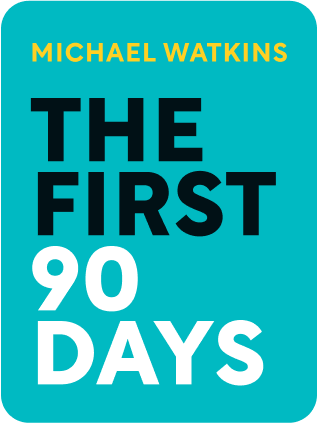

This article is an excerpt from the Shortform book guide to "The First 90 Days" by Michael Watkins. Shortform has the world's best summaries and analyses of books you should be reading.
Like this article? Sign up for a free trial here .
Are you stepping into a new leadership role? What is the first thing you should do once your tenure is underway? What is the STARS approach?
Transitioning into a new leadership role—whether it’s a promotion within the same company or a totally new, unfamiliar territory—can be nerve-wracking. One way to make the process easier is to use the STARS approach to define success.
Here are some tips on how to integrate into a new leadership position and ensure success through your tenure.
Navigating a Leadership Transition
Transitioning to a new leadership role can be both unnerving and exciting, especially if you also joined a new company. Once your tenure is underway, the first thing you need to do is to develop an accurate diagnosis of the stage of growth and development that your company is currently in. Once you are armed with that information, you’ll be able to more effectively answer two key questions including (1) what kind of change will I be leading the charge on?, and (2) what is my personal style of enacting change as a leader?
The STARS Model
STARS is an acronym used to describe five different business stages. It stands for:
- Start-up
- Turnaround
- Accelerated growth
- Realignment
- Sustaining success
As a general matter, they are defined as:
- Start-up: You are launching a new business, product, project, or relationship and will have to organize and implement the various pieces needed for success (e.g., people, money, technology, and so on). Start-ups are often defined by a lot of energy and ambition but can be plagued by a lack of structure or focus. As a leader in a start-up, you’ll have the opportunity to shape key facets of the work but also may have limited resources.
- Turnaround: The business may be a sinking ship and requires immediate action to recover or redirect. The need for change is often urgent, necessitating a “ready-fire-aim” approach that means making tough decisions earlier on and with less information than might be ideal. Coming in as a leader during this stage can often be high risk/high reward.
- Accelerated growth: Things are moving forward within your company but a scale-up or plan for expansion may be needed by creating new structures, processes, or personnel. Adding these pieces while sustaining the core company culture and vision presents challenges and risks of undermining the factors that led to success in the first place.
- Realignment: Perhaps your company is experiencing general success but is suffering from problems rooted in stagnation or complacency. As a leader at this stage, you’ll likely have access to structures and resources that are already in place but may struggle to instill a sense of urgency or inspire motivation for the change that’s needed to bring the business to the next level.
- Sustaining success: Here a leader will be seeking to capitalize on the strong foundational success of the company but looking to help it build and grow. This will likely require cycling back through the start-up, turnaround, and acceleration phases to create a dynamic but sustainable approach to the company’s success.
Beyond understanding the business dynamics at play in each of these five stages, it’s important also to recognize how they might each embody a different kind of organizational psychology. For example, start-ups may be energized but frantic, turnarounds may be defined by low morale, accelerated growth may require imposition of new disciplines, realignment may be plagued by denial, and sustaining success may require an infusion of new motivation for learning and growth.
Using STARS to Appropriately Define Success
As you plan for what success looks like in your role, keep in mind that it might manifest a bit differently depending on what STARS stage you are operating in. For example, evaluating “success” in a realignment or sustaining success stage can be tricky because it’s often about subtle change or fending off problematic shifts. There must be a more sophisticated understanding of what was at issue in the past and how things could have worked out differently with different leadership.
Acceleration System
Independent research has shown that the nine principles reviewed thus far can help decrease the time for you to reach the break-even point by up to 40%. But not only do you benefit from investing in a smooth transition into your new role, so does your company. A successful leadership transition can help businesses by speeding up project implementation and creating competitive advantages. But a poor leadership transition can cost a company millions of dollars and substantially slow growth. For that reason, implement the tenth principle for success in your first 90 days: help develop strong acceleration (or transition) systems that can be implemented not only at the top leadership levels but across all team members. Indeed, you can use the 90 day model described here to transition employees at all levels and improve teamwork, relationships, and outputs.
Consider these key design principles for implementing a successful acceleration model:
Focus on the Crucial Transitions
All companies are undergoing many transitions simultaneously. Take a step back and identify where acceleration is most needed and where it would most benefit the company. Gather data about transition frequencies such as where and when there will be movement in the company such as onboardings, inboardings, promotions, or lateral changes.
One way to organize this information is to create a “transition heat map” which identifies all movement, where it’s happening, what kind it is, and the level it’s happening at. This can be done by identifying each unit and the types of transitions that might affect it. Then, use four common transition categories (onboarding, promotion, geographic moves, lateral moves) and indicate whether such transitions are likely to be of high, medium, or low intensity in a given group. Use this map to identify and plan for acceleration priorities.
Change Failing Processes
Your company may already be engaged in certain practices that undermine the goal of an effective acceleration process. Identify and target those failures, which may include:
- Poor expectation setting as a result of ineffective communication and information sharing with and between leaders
- Not accounting for STARS when hiring/promoting
- Pushing for too much too soon from leaders who don’t yet know how to manage risks in their new roles
- Leaving leaders to their own devices by using a sink or swim method
- Promoting based on past performance alone, without considering capacity for growth in the new role
- Using training programs that are ineffectual, poorly timed, or non existent
- Overemphasizing technical skills during hiring at the expense of considering a prospective employee’s cultural fit within the company
- Poor succession planning which spreads people too thin during transition as they try to navigate multiple roles simultaneously
- Not connecting new leaders with key stakeholders who can help inform goals and next steps.
Evaluate the Efficacy of Current Acceleration Processes
The following questions will help you gain a more sophisticated understanding of how your company is currently executing support during transitions:
- What acceleration processes are currently in place and how well are they working?
- What materials or tools are currently being used (such as coaching or self-guided materials)? What are the costs and benefits of those materials?
- Is the current approach piecemeal or haphazard across certain areas (such as onboarding or promotions)? Or is there a common vision and model being implemented throughout the company?
- Are important stakeholders playing needed support roles during transition?
- Is HR currently structured to support transitions through its systems and processes for information sharing? If not, what resources do they need to do so?
Create a “Common Core Model”
A “common core model” means that consistent framing, tools, and visions are used for all transitions within the company. Such an approach gives employees the language and knowledge they need to understand the essential transition concepts discussed earlier in this book (e.g., understanding the STARS stages, planning conversations with your boss, securing alliances, and so on).
Consider Timing
Be deliberate about what type of support to deliver and at what point in the transition such support would be most effective. Early on, for example, the emphasis may be on supporting accelerated technical, cultural, and political learning. Later support, however, may be oriented to broader topics such as strategic vision and securing early wins. If support for all of the above is offered simultaneously, it may be too overwhelming. Similarly, if the support is not offered at the proper time, it may be ignored because it does not feel pertinent to the current transition stage. Remember too that the preparation for a new job begins well before the first day of work. Consider, therefore, what resources (e.g., access to data, reports, coaching support, and so on) you can offer to new leaders before their official transition.
Build Structure into Your Processes
Create structured tools to ensure that essential learning does not get lost in the shuffle. This could take the form of preset coaching meetings, regular cohort events, and so on. Get coaches on board as early as possible so that they can be part of the diagnostic process and thus have insight into the pieces at play.
Customize as Needed
Be aware of how different transition categories may demand specific kinds of support. For example, promotions include their own challenges as individuals are likely building up new skill sets while simultaneously changing their relationships with others, including how they interact and exert authority. Support resources should therefore be focused on developing self awareness around these questions and outlining personal development plans. By contrast, onboarding to a new company will often mean culture shock, focused relationship building, and appropriately aligning expectations. Consider uniquely applicable resources for those challenges such as connecting new hires to key stakeholders as they get a lay of the land.
Prioritize Resources Appropriately
It’s important to recognize that different investments of time and resources will be needed for different levels of leadership. Executives curry such influence that they will often merit highly individualized transition resources through, for example, robust coaching support. And while it might not be feasible to provide those same tools to leaders at other levels, you may still be able to provide them with key tools such as virtual workshops or self-guided materials. Regardless of the leadership level involved, it’s essential to assess the costs and benefits of different tools and then deliberately match them to different roles to maximize your return on investment.

———End of Preview———
Like what you just read? Read the rest of the world's best book summary and analysis of Michael Watkins's "The First 90 Days" at Shortform .
Here's what you'll find in our full The First 90 Days summary :
- A field guide for anyone undergoing professional transition
- How to develop strong relationships with your new colleagues
- Why early wins are so important






